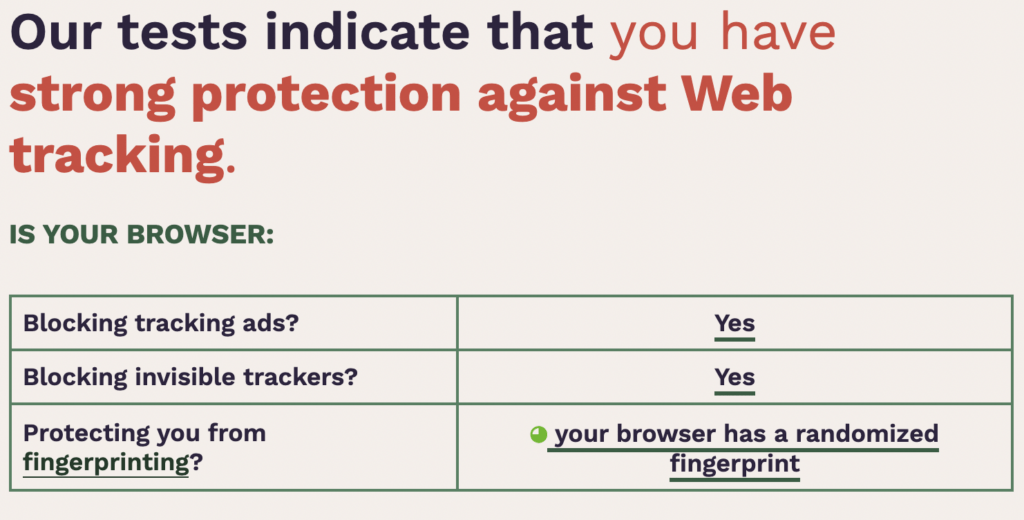Browser Fingerprinting
Browser fingerprinting occurs when you visit any website and exchange information with the site so that it will render properly on your device. The settings provided to the server allow it to send you the parts of the website that you need. You provided all of the data it needs to create a fairly unique snapshot of your device.
When you visit a website, your browser makes a “request” for that site. In the background, advertising code and invisible trackers on that site might also cause your browser to make dozens or hundreds of requests to other hidden third parties. Each request contains several pieces of information about your browser and you, from your time zone to your browser settings to what versions of software you have installed.
At first glance, the data points that third-party trackers collect may seem relatively mundane and disparate. But when compiled together, they can reveal a detailed behavioral profile of your online activity, from political affiliation to education level to income bracket. Your online activity can be logged as long as this trove of data about you is linked to you. Ad networks primarily rely on two methods to maintain this link: cookie tracking and browser fingerprinting.
Your Browser Fingerprint.
Let’s explore what the browser you are using says about you. Go to a free resource run by the EFF.

Cover Your Tracks analyzes how well your browser and add-ons protect you against online tracking techniques. A Cover Your Tracks test shows you how trackers see your browser and how uniquely configured—and thus identifiable—it is.
Click “Test your Browser.” Do not close this new tab. Leave it open, and then come back to this page.
Flip back and forth as you go through this and look at the unique data for you and your Browser.
Your goal is to get to the below:

Let’s go down through a few of the options.
- User Agent: This is your system and is often very specific to your computer/mobile device and browser.
- Time Zone: Even when under a VPN to another location, the “Time Zone” can give away the general location of the system and contradict a VPN you might be used for location
- Screen Size: This says a lot about the device you are on. Laptops & Mobile Devices can have unique screen sizes.
- Hash Canvas Fingerprint: This is a complex and reliable tracking fingerprinting metric. Take a moment to read what this is and know it is hard to mitigate.
- System Specs: The rest is very specific system details. Know that our browsers provide all of this to EVERY website.
If we combine these specs and database them, we have a unique signature for our device that can track us across multiple websites.
Now open another browser and open the same website as above. Compare the results of the two.
Any Differences? Is anything the same?
Hopefully, you did not see much at this point because you are using a privacy-oriented browser. If you see a lot of unique data points, take moment to read this post on privacy-oriented browsers.
To learn more about Browser Fingerprints, head over to the EFF here:
Here are a few highlights from that site:
What are cookies?
Cookies are small chunks of information that websites store in your browser. Their main use is to remember helpful things like your account login info or what items were in your online shopping cart—in other words; they save your place. But they can also be misused to link all your visits, searches, and other activities on a site together. This use of cookies is a privacy violation, and browsers generally allow you to block, limit, or delete cookies.
What is a digital fingerprint?
A digital fingerprint is a list of unique characteristics of a single user, their browser, and their particular hardware setup. This includes information the browser needs to send to access websites, like the location of the website the user is requesting. But it also includes a host of seemingly insignificant data (like screen resolution and installed fonts) gathered by tracking scripts. Tracking sites can stitch all the small pieces together to form a unique picture, or “fingerprint,” of your device.
What is the difference?
Think of scientists’ small tracking devices to follow animal migration patterns or a GPS transmitter attached to a car. As long as they’re attached to the target animal or vehicle, they are accurate and effective—but they lose all value if they’re knocked off or discarded. This is roughly how cookies behave: they track users up until the point a user deletes them.
Fingerprinting uses more permanent identifiers such as hardware specifications and browser settings. This is equivalent to tracking a bird by its song or feather markings or a car by its license plate, make, model, and color. In other words, metrics are harder to change and impossible to delete.
The end of the learn block has a few simple suggestions, but nothing is easier than changing to a browser that does all of this for you.
Thanks to the team over at EFF for a lot of great content:
Cover Your Tracks’ primary goal is to help you determine your balance between privacy and convenience. By giving you a summary of your overall protection and a list of characteristics that make up your digital fingerprint, you can see exactly how your browser appears to trackers and how implementing different protection methods changes this visibility. The above suggestions are simple and straightforward protection methods to serve as excellent starting points.
EFF- Cover Your Tracks
